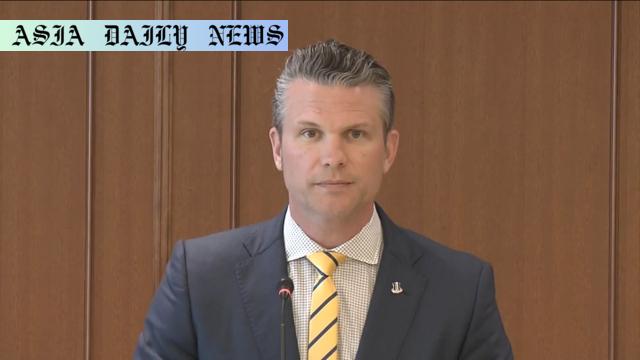US-Japan Alliance: Phase one begins upgrading U.S. Forces Japan into Joint Force HQ to bolster Indo-Pacific deterrence.
US upgrades Forces Japan to a Joint Force Headquarters.
Collaboration improves coordination with Japan’s military.
Hegseth underscores deterrence and alliance robustness.
Focus on Indo-Pacific peace amidst rising global tensions.

Phase One: Elevating US Forces Japan to Joint Force Headquarters
The United States Department of Defense has taken a bold step in fortifying its defense alliance with Japan by initiating phase one of upgrading the U.S. Forces Japan (USFJ) into a Joint Force Headquarters. This transformation aims to enhance coordination capabilities with Japan’s newly established Joint Operations Command, which integrates the nation’s Self-Defense Forces’ three branches under a unified command. This strategic upgrade is a testament to the enduring US-Japan partnership and a proactive response to evolving security challenges in the Indo-Pacific region.
U.S. Defense Secretary Pete Hegseth and Japanese Defense Minister Nakatani Gen held a joint press conference in Tokyo to discuss the importance of this collaboration. Hegseth highlighted that this effort underscores the shared commitment to peace, security, and deterrence against potential threats in the region. He emphasized that America’s alliance with Japan is a cornerstone in maintaining stability in an increasingly volatile global environment, especially amidst geopolitical tensions involving China, Russia, and other actors in the region.
Strengthening the US-Japan Alliance
During the talks, Hegseth praised Japan as a “model ally” and expressed confidence in Japan’s capacity to assess and enhance its defense expenditures, without specific budgetary discussions during the meeting. Instead, focus was placed on robust collaboration, mutual understanding of security needs, and shared responsibility for maintaining peace in the region. The integrated alliance not only aims to increase operational readiness but also sends a robust deterrence signal to potential aggressors.
Hegseth also addressed criticism of past U.S. foreign policies, suggesting that recent global crises like Russia’s invasion of Ukraine and the Hamas attacks on Israel might have been deterred with more decisive leadership. Asserting that the current administration is focused on rebuilding



Commentary
undefined